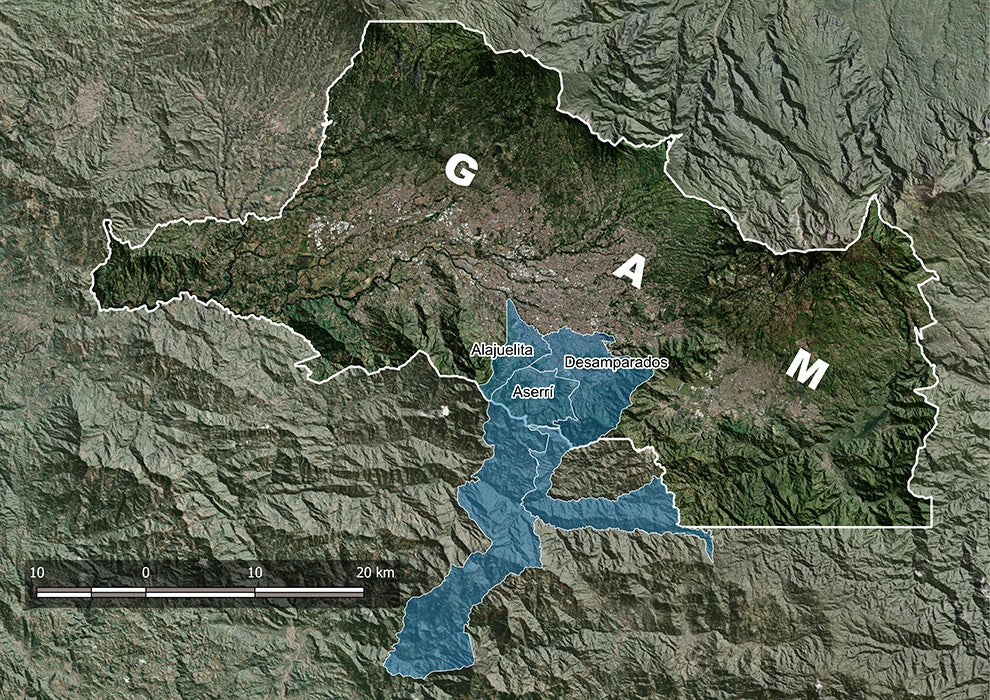 Vista de la ciudad de San José de Costa Rica en la distancia. Fuente: Banco Mundial
Vista de la ciudad de San José de Costa Rica en la distancia. Fuente: Banco Mundial
Costa Rica is a success story: one of the most prosperous countries in the Latin American region, it is a global leader in its response to climate change and biodiversity conservation and it is well-known for its sustained economic growth and stable democratic institutions.
Notwithstanding its many achievements, Costa Rica’s cities are not the emblems of sustainability, efficiency, and livability that one would expect . Stagnant poverty rates and rising inequalities manifest in the country’s urban centers, where pockets of poverty persist in some of the most economically dynamic and affluent parts of the country.
As most Latin American countries, Costa Rica urbanized rapidly. The growth of its cities took place largely unplanned . The metropolitan area surrounding San Jose, the capital city, which concentrates half of the country’s population and 73 percent of national production, emerged as a cluster of rural towns and small cities. Many households settled in disaster prone areas, exposing them to hazards and making them more vulnerable to the effects of climate change . The region continues to be, even today, poorly integrated, with deep canyon rivers and mountains acting as natural barriers to connectivity between the different population centers.
The Costa Rica Urbanization Review “Connecting the Greater Metropolitan Area of Costa Rica” zooms in on an urban subregion of the Greater Metropolitan Area that rarely comes into view, but that concentrates the country’s most problematic urban dynamics: the municipalities of Desamparados, Alajuelita and Asseri that form the so-called South Corridor, an expansive area to the South of the municipality of San Jose.
Costa Rica's South Corridor
The South Corridor municipalities are among the poorest and most unequal in the Greater Metropolitan Area, with high deficits in housing, health, and education . Despite its proximity to the country’s economic center, the South Corridor lacks jobs, opportunities, access to quality public services, and present high levels of risks. Most of its population rely on central areas like San Jose, for their daily livelihoods. However, public transport options are limited, costly and time-consuming, penalizing poorer families that rely on the transport system. Increasing dependence on private cars leads to highly-congested roads, high levels of transport-related emissions and dangerous levels of air pollution.
Much of the difficulty plaguing the South Corridor stems from this history of unplanned and informal urbanization. For the past 50 years, the South Corridor’s population grew even more rapidly than that of the wider metropolitan areas. Informal land occupation and squatting in the South Corridor was so significant that the country’s social housing system was engineered on its heels. Families living in informal settlements in the area, many of them edged along riverbeds or high slopes, are exposed to recurrent flood events, landslides, and other disasters.
Land use, housing, transport, and better livelihoods in Costa Rica
In consultation with the Government of Costa Rica, the Urbanization Review identified several priority areas to better manage urbanization pressures. Amongst these is the need to strengthen the capacities of municipalities to plan and regulate land use . In this regard, the World Bank is working with the Government to develop a new methodology for land use planning to empower municipalities to update – and enforce – their land use plans.
The Urbanization Review also points to the need to improve housing conditions, particularly amongst low-income families, and to address the complex challenges facing informal settlements. Here too the World Bank is supporting the government with an analysis of the institutional, technical, and financial instruments to provide poor and vulnerable households with high-quality public spaces, connectivity, and access to basic services and resilient housing, in a way that informs the future formulation of a national program for integrated slum upgrading.
Regarding transport, the Bank has been supporting the Government of Costa Rica to introduce reforms to promote low-carbon solutions and improve the financial viability of private sector investment in new electric buses . This will benefit services in the South Corridor and will contribute to the country’s decarbonization agenda.
Using land wisely and increasing options for public mass transport and active mobility, alongside targeted investments to improve housing and informal settlements, will help Costa Rica’s cities live up to expectations and continue being at the forefront of sustainable development.
You can download Costa Rica's Urbanization Review here.
To receive weekly articles, sign-up here
Related articles




Join the Conversation